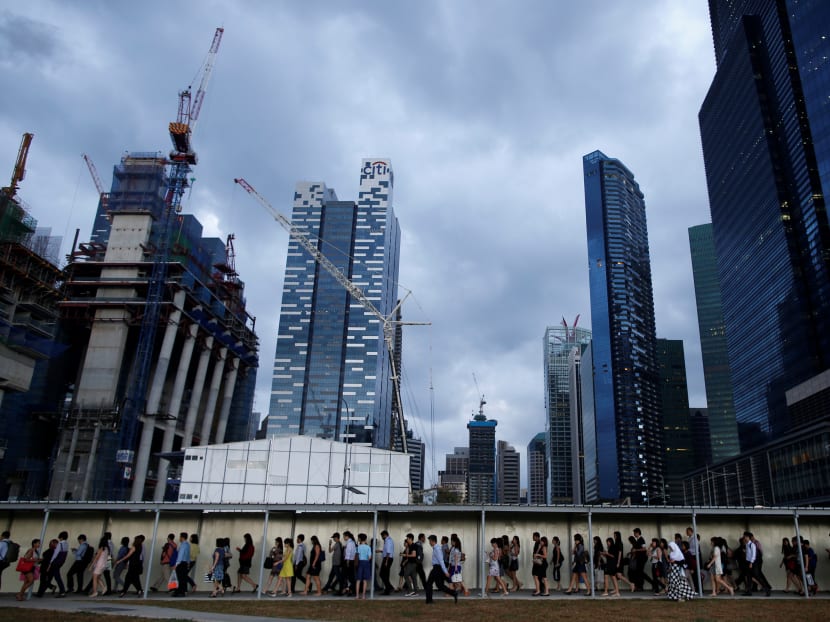Singapore's limited space a strength in amassing talent
SINGAPORE — Singapore should continue to use its small size to its advantage by encouraging the co-location of similar firms in order to attract talent, create critical mass for shared infrastructure, and generate “knowledge spillovers”.
SINGAPORE — Singapore should continue to use its small size to its advantage by encouraging the co-location of similar firms in order to attract talent, create critical mass for shared infrastructure, and generate “knowledge spillovers”.
The Committee on the Future Economy (CFE) also said that the Government should keep up its investment in new international connections, citing development plans for Changi Airport Terminal 5 and the Singapore-Kuala Lumpur High Speed Rail project.
These initiatives help to develop a vibrant and connected city of opportunity, forming one of the seven strategies it announced on Thursday (Feb 9)..
“In the future economy, Singapore must also be digitally connected, for that would allow us to transcend our boundaries. We must maintain our position as one of the world’s most digitally connected cities. This will be supported by the strengthening of Singapore’s communications infrastructure, for example, by trialling technologies such as the Heterogeneous Network,” the committee said in its report. The Heterogeneous Network allows mobile devices to seamlessly switch between different types of networks such as 4G and Wi-Fi.
Other recommendations include increasing the space Singapore has despite its limited mass by freeing up land for redevelopment as well as using new ways to create more space.
This can be done, for instance, by developing a master plan to expand underground infrastructure. Singapore can also work on using its existing space better, and one way is by creating an urban logistics system to manage the transportation and distribution of goods that will reduce congestion.
Forging partnerships will be another way to build a connected city.
A suggestion is to create clusters of “mutually reinforcing economic activities” by putting together companies of varying sizes with “synergistic activities” to encourage partnerships.
The private sector can also partner the Government in projects by taking on the role of “master developer” — in developing, place-making, and managing future precincts, the CFE said. Public-private partnerships will also aid in the development of exportable capabilities.
An example is Hyflux, an environmental solutions company that is working with national water agency PUB and research institutions to develop and pilot innovative water technologies that may be adopted for use in various projects around the world.
The committee also added that it would set aside special test-bedding zones in which firms can develop as well as refine their products.
“Cities are the economic drivers of the future. Singapore’s capacity to flourish in the future global economy is tied to the city-state’s ability to attract and create opportunities. The city must be well-connected externally, with sufficient space to grow and rejuvenate internally. We should use our limited size to our advantage by encouraging agglomeration,” the committee said.







